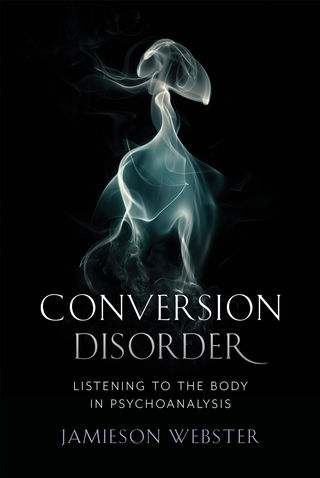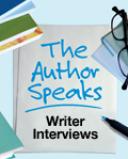Psychoanalysis
Conversion Disorder
The Book Brigade talks to psychoanalyst Jamieson Webster.
Posted November 29, 2018

For some people, perhaps even many people, disordered thinking shows up primarily in physical symptoms. At one extreme, such symptoms constitute conversion disorder. What do such symptoms means, and how are they best approached?
What does the title mean and what conditions fall in its domain?
The title is, of course, nodding to the psychiatric diagnosis of conversion disorder, which concerns particular kind of psychosomatic issues related to neurological functioning that cannot be explained medically, like loss of consciousness, disturbances of speech or vision, feeling of paralysis or other movement disorders. But the book plays with the term and twists and turns it, eventually making it a question of a more general problem, not just for individuals but for society at large. In a sense, I think every patient struggles with what it means to have a body, and in therapy, the body comes to life and joins in the unfolding conversation. Conversion, by definition, is not just the transformation of psychological problems into bodily ones, but also contains a religious meaning (the conversion experience, which leads someone to become religious), a chemical meaning (change from one state to another), as well as a mathematical meaning (change in unit of measurement). I think this is what patients are looking for—radical transformation and change, a new body, which is what I write about.
Under what conditions do people convert psychological energy into physical symptoms?
There are those for whom the conversion (into physical symptoms) is the main condition that comes to define their psychological suffering, and there are others who convert, or fail to convert, energy differently, keeping it at some border space as anxiety, or converting everything into the vicissitudes of thinking and rumination and argument or judgment. But what I find as a therapist is that as the treatment deepens, something of the body comes to the surface, not just as symptomatic suffering but often as excitement, or, to flip it around, more of a sense of what feels dull or dead. Through the work, we begin to see how these bodily states structure the rhythm of someone’s life, for better and for worse.
Is it necessary to make people aware of the conversion in order to heal the psychic problem?
Some people are very attuned to it and some aren’t, and that is just a question of character style. As a psychotherapist and psychoanalyst, however, I think we should be very aware of it. At times, there may be a reason to point to or work with the conversion symptoms that may be arising in a treatment—certainly if the patient complains of headaches every time they speak about a particular topic, or headaches arise during a certain period of the work, it is important to ask—but I wouldn’t say the person needs to be made aware of it in order to heal. Nevertheless, healing, as I envision it in this book, is carried by the body, which is where the treatment unfolds. Embodiment might be a good word here.
You use the word hysteria. I thought hysteria was an antique word in the mental health world. Why is it relevant today and what does it mean?
I’m probably a bit of an antique as a person and I resist the frenzy for contemporary updating. In fact, I point out in the book that conversion itself is a very antique term in the world of psychology, one Freud used extensively, and actually is a synonym for hysteria, which psychiatry wanted to get rid of (and did) in the 80s as psychopharmacology took center stage. I like the idea of hysteria, and I love hysterical patients (being something of one myself) because essentially what the term means is a patient who is too alive, especially in their body and in relation to sexuality. Hysterics, throughout history, and here we are going way back to so called witches and mystics, then fast-forwarding to the infamous hysterics in hospitals across Europe at the turn of the century, were mostly women whose “symptomatic” picture was a major challenge to authority and dominant modes of thinking: So the witch or mystic challenges the religious orthodoxy, and the more contemporary hysteric challenges modern medicine, especially contemporary psychiatry and psychology. You will always find her and the question of her body and what she is doing with it at the heart of certain diagnoses, especially those that aim to condemn. For this reason I also like the idea of a ‘conversion disorder’ meaning that conversion, as a disordering of the body, is also what creates a kind of disordering of the world, one that has revolutionary potential.
What has to happen in the mind of a patient before the physical symptom(s) can dissipate?
This question is already a problem to the extent that it implies a kind of mind/body dualism, versus how one might stereotypically think of conversion disorder as simply mind become body. What does have to happen in treatment is a new relationship or link between mind and body, which means that the work done cannot happen only in the mind, because something has to happen in the body as well. The fact that this has to happen, and indeed can happen, simply through the regular meeting of two people who talk about the most intimate things possible, from dreams to desire to sexuality to trauma and relationships, is what I find practically miraculous and keeps me going back to work every day.
Could you describe the process of therapy, or at least the turning point?
The book is full of cases that speak to small turning points and large ones, showing how as psychotherapeutic work deepens, some point on the body becomes the linchpin in changing a certain symptomatic economy. One thing I’m particularly proud of is that in a final case example, I show how this point also leans on the work a therapist has done in his or her own analysis. When you have a unique, powerful moment in working with someone, where whole vistas open up that had otherwise been shut down, the therapist can look back on their own life and work on themselves and discover what allowed them to help bring a patient to this place. This is a real pitch for the need for any person working in mental health to take their own treatment as far as it will possibly go, because this isn’t about applying a predefined method or even predefined wisdom to a patient, but rather leaning on your own analytic work to be able to listen, really listen, to what someone says, something you can’t possibly know or understand in advance.
If you had to pick one thing to tell anyone about conversion disorder, what would it be?
I wrote this book because all of my patients were struggling with their bodies, not only the dramatic conversion disorders that capture so much attention—from hysterical epilepsy to hysterical blindness, but also chronic pain disorders and hypochondria (though there are still so many with these difficulties). So I was really writing about mini-conversion disorders from racing hearts to constipation, from irritable bowel syndrome and autoimmune issues to issues with sexual arousal or low-energy that isn’t quite depression. And I wanted to also see how the contemporary landscape was contributing to this, especially since it is one that both overwhelms us and fails to take care of us, especially our bodies, despite our being told that our bodies have to work around the clock and be productive and beautiful and fit. More than this, I think the body is a site of powerful resistance and especially when it can find the way to feel pleasure again, I wanted to talk about how this happens in psychoanalytic work.
About THE AUTHOR SPEAKS: Selected authors, in their own words, reveal the story behind the story. Authors are featured thanks to promotional placement by their publishing houses.
To purchase this book, visit:



